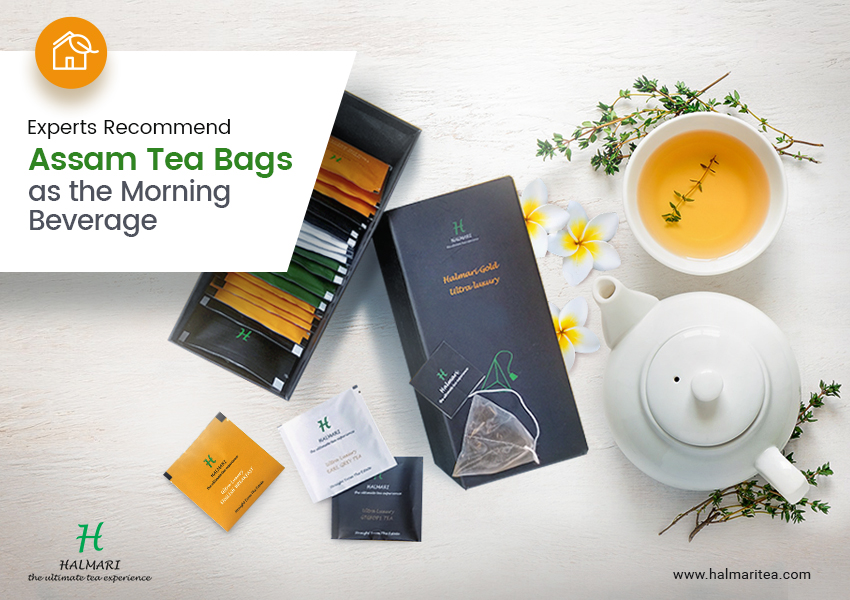History of Tea: The rich aromatic beverage tea is a source of rejuvenation for people worldwide. Presently, India holds the second rank among Asia-pacific countries in terms of tea exports, which is just after China.
While in tea last few years, tea has gone through significant experimentations and alterations, the classic beverage has been a part of India for a long time. And, Halmari’s contribution can not be neglected while mentioning the rich heritage of tea in India. It has made India’s hold in the global tea market prominent both in terms of quality in tastes and flavors.
However, there are two separate yet interlinked perspectives when it comes to the origin history of tea in India. These mainly originate from differences presented in historical records and Assamese folk stories.
The Assamese Tea Folktale
 The Assamese Tea Folktale
The Assamese Tea FolktaleThe popular Assamese folktale mentions that two brothers from the Singpho tribe of Assam found this plant while hunting. After cumbersome hunting activities, they ate these leaves to satiate hunger when they became exhausted. Surprisingly, they discovered that it not only subdued their appetite but rejuvenated them as well.
This history of tea is popular among the Singhpo tribesmen and has become a part of their culture. In fact, they have been consuming this beverage for generations for its ingrained medicinal values.
Britain’s Contribution in History of Tea in India
 Britain’s Contribution in History of Tea in India
Britain’s Contribution in History of Tea in IndiaThe British people have a significant contribution in building a vast tea empire in India. They brought tea seeds from China and cultivated them in this country in the 1770s. However, owing to the heat of the Assam valleys, it did not result as assumed.
In the 1780s, Robert Kyd found the wild Assamese tea plants grown in the upper river valley of The Brahmaputra. British exporters shipped this to England for public selling in London Auction. Eventually, this established a remarkable reputation of Assamese tea in the British market.
Influence of Halmari in India’s Glorious History of Tea
 Influence of Halmari in India’s Glorious History of Tea
Influence of Halmari in India’s Glorious History of TeaHalmari has left an indelible remark as one of the best premium first and second flush tea producers. It has been in this business since 1913, and for over 100 years, it has been proficiently maintaining its high standard.
Look at how Halmari has contributed to the rich history of tea in India.
- Garden Fresh Leaves in All Season
The fertile estate of Halmari, spread over 534 hectares in Assam, provides the best ground for producing quality garden fresh tea leaves. They can even produce tea even in the lean period when most competitors fail.
Based on its incomparable taste and flavor, it has successfully secured a place on shelves of premium stores, hotels, and the kitchen of its large consumer base worldwide. Thus, based on the strength of quality and taste, it has received accolades like the “Global Tea Championship Award” for consecutively five years since 2015. Additionally, it ranks among the best nine tea estates in the world.
- Producer of a Variety Of Teas
Halmari infuses several flavors and variations through the oxidization process to provide a rich multifold experience to its consumers. For example, it produces green, oolong, and black tea by undergoing different oxidization processes.
Further, the variety of garden-fresh teas produced by Halmari meets the need of all seasons. For example, one can brew and consume Halmari’s Gold Green Tea or Gold Orthodox Tea in winter to get maximum health benefits. Whereas teas like Tulsi Tea, Green Tea, etc. are best for summer.
India’s long history of tea cultivation includes stories of folklore and historical records. However, one thing common in all these is the presence of Assam’s fertile land. It helps tea estates produce the best garden fresh leaves like no other.
Spread in the rich Moran belt of Assam, Halmari has achieved its fame based on the superior taste, quality, and flavors of this beverage. This way has Halmari shaped India’s glorious past of tea production and established India’s recognition in the global market.